UPSC Daily Current Affairs- February 10, 2022 PDF Download
GS-II
Intensified Mission Indradhanush (IMI) 4.0 launched
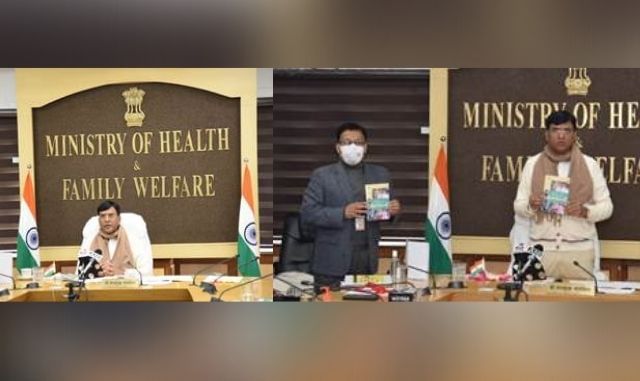
Context
The Union Health Minister has launched the Intensified Mission Indradhanush (IMI) 4.0.
About IMI 4.0
- The IMI 4.0 will have three rounds and will be conducted in 416 districts (including 75 districts identified for Azadi ka Amrit Mahotsav) across 33 States and UTs, a Health Ministry statement said.
- It will immensely contribute in filling the gaps and make lasting gains towards universal immunisation.
- It will ensure that Routine Immunisation (RI) services reach the unvaccinated and partially vaccinated children and pregnant women” he said.
What is Mission Indradhanush?
- With the aim to increase the full immunisation coverage, the PM launched Mission Indradhanush in December 2014.
- It aimed to cover the partially and unvaccinated pregnant women and children in pockets of low immunisation coverage, high-risk and hard-to-reach areas and protect them from vaccine-preventable diseases.
- The first two phases of the Mission resulted in 6.7% increase in full immunisation coverage in a year.
Aims and objectives
- It aims to immunize all children under the age of 2 years, as well as all pregnant women, against eight vaccine-preventable diseases.
- The diseases being targeted are diphtheria, whooping cough, tetanus, poliomyelitis, tuberculosis, measles, meningitis and Hepatitis B.
- In 2016, four new additions have been made namely Rubella, Japanese Encephalitis, Injectable Polio Vaccine Bivalent and Rotavirus.
- In 2017, Pneumonia was added to the Mission by incorporating the Pneumococcal conjugate vaccine under Universal Immunisation Programme
India-Srilanka Bilateral Meeting
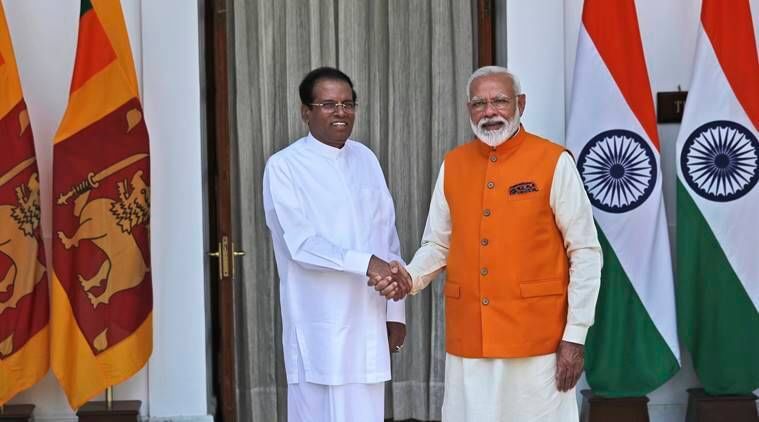
Context
Recently, in a bilateral meeting India has agreed to provide a grant to Sri Lanka to implement a ‘Unitary Digital Identity framework’, apparently modelled on the Aadhaar card.
- Both sides also discussed the fishermen's issue and India provided financial assistance of 2.4 billion USD to Sri Lanka.
- Earlier, India and Sri Lanka agreed to a four-pronged approach to discuss initiatives on food and energy security to help mitigate Sri Lanka’s economic crisis.
What is the Unitary Digital Identity framework?
About
- It is similar to India’s own Aadhaar and under the proposed Unitary Digital Identity framework, Sri Lanka is expected to introduce a:
- Personal identity verification device based on biometric data
- Digital tool that can represent the identities of individuals in cyberspace and
- Identification of individual identities that can be accurately verified in digital and physical environments by combining the two devices
- Previous Attempts
- This is not the first time that Sri Lanka is attempting to digitise its citizens’ identities. Just a few years ago from 2015 to 2019, the Sri Lankan government mooted a similar Electronic-National Identity Card — or E-NIC —that privacy advocates opposed on grounds that the state would have full access to citizens’ personal data in a central database.
- Government also tried initiating the project as early as 2011. Neither project was implemented.
What is the Recent Economic Support that India is Providing to Sri Lanka?
- Beginning January 2022, India has been providing crucial economic support to the island nation in the grip of a severe dollar crisis that, many fear, might lead to a sovereign default, and a severe shortage of essentials in the import-reliant country.
- The relief extended by India from the beginning of this year totals over USD 1.4 billion —a USD 400 currency swap, a USD 500 loan deferment and a USD 500 Line of Credit for fuel imports.
- Sri Lanka is further negotiating a USD 1 billion assistance from India to help the country as it faces an unprecedented economic crisis.
What was India’s Stand on Bilateral Relations?
Expeditiously take forward mutually beneficial projects”, which include:
- Proposals to enhance air and sea connectivity between India and Sri Lanka
- Economic and investment initiative
- Steps to enhance Sri Lanka’s energy security
- Keeping the neighbours’ “shared maritime domain safe from various contemporary threats”, and cooperation in combating Covid-19 pandemic.
What are Some Major Issues in India-Sri Lanka Relations?
- Killing of Fisherman
- Killing of Indian fishermen by the Sri Lankan Navy is a lingering issue between these two nations.
- In 2019 and 2020, a total of 284 Indian fishermen were arrested and a total of 53 Indian boats were confiscated by the Sri Lankan authorities.
- In the current meeting both the countries discussed the Palk Bay fisheries conflict and reiterated the longstanding consensus to handle fishermen issues through “humanitarian approach and refrain from the use of violence”.
- East Coast Terminal project
- This year (2021) Sri Lanka cancelled an MoU signed with India and Japan for the East Coast Terminal project.
- India protested the cancellation though it later agreed to the West Coast Terminal being developed by the Adani group.
- Influence of China
- China’s rapidly growing economic footprint (and political clout as a corollary) in Sri Lanka is straining India-Sri Lanka relations.
- China is already the largest investor in Sri Lanka, accounting for 23.6% of the total Foreign Direct Investment (FDI) during 2010-2019 as against 10.4% from India.
- China is also one of the largest export destinations for Sri Lankan goods and holds over 10% of its external debt.
- 13th Amendment of the Sri Lankan Constitution
- It envisages devolution of necessary powers to the provincial councils to address the just demand of the Tamil people for equality, justice, peace, and respect within a united Sri Lanka.
What should be the Way Forward for India?
- A subterranean trust deficit exists between India and Sri Lanka yet neither Sri Lanka nor India can afford to have strained ties.
- However, as a much larger country, the onus is on India to carry Sri Lanka along. India needs to be extremely patient and avoid reacting to any pinpricks and engage Sri Lanka even more regularly and closely, especially at the highest levels.
- There is a need to step up our people-centric developmental activities while scrupulously staying clear of any interference in Colombo’s domestic affairs.
- Nurturing the Neighbourhood First policy with Sri Lanka is important for India to preserve its strategic interests in the Indian Ocean region.
Role and Power of Governor
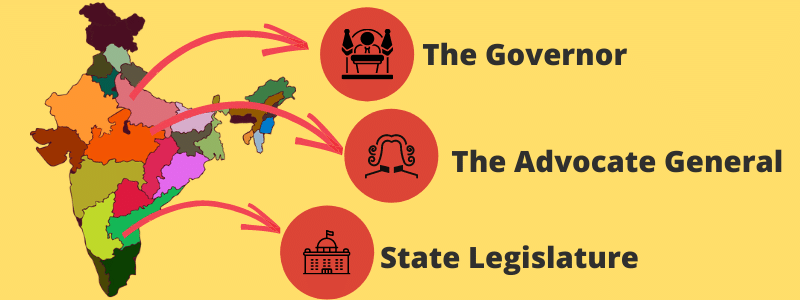
Context
The Governor acts in 'Dual Capacity' as the Constitutional head of the state and as the representative of the Union government.
- In recent years, the bitterness between states and Governors has been largely about the selection of the party to form a government, deadline for proving majority, sitting on Bills, and passing negative remarks on the state administration.
- Due to this, Governor is referred to with negative terms like an agent of the Centre, Puppet and rubber stamps.
What are Constitutional Provisions Related to the Governor?
- Article 153 says that there shall be a Governor for each State. One person can be appointed as Governor for two or more States.
- A Governor is appointed by the President and is a nominee of the Central Government.
- It is stated that the Governor has a dual role.
- He is the constitutional head of the state, bound by the advice of his Council of Ministers (CoM).
- He functions as a vital link between the Union Government and the State Government.
- Articles 157 and 158 specify eligibility requirements for the post of governor.
- Governor has the power to grant pardons, reprieves, etc. (Article 161).
- There is a CoM with the CM at the head to aid and advise the Governor in the exercise of his functions, except some conditions for discretion. (Article 163)
- The Governor appoints the Chief Minister and other Ministers (Article 164).
- Governor assents, withholds assent, or reserves the bill for the consideration of the President passed by the Legislative Assembly (Article 200).
- Governors may promulgate the Ordinances under certain circumstances (Article 213).
What are the Friction Points in Governor-State Relations?
- Governor is envisaged as an apolitical head who must act on the advice of the council of ministers. However, the Governor enjoys certain discretionary powers granted under the Constitution. For example,
- Giving or withholding assent to a Bill passed by the state legislature,
- Determining the time needed for a party to prove its majority, or
- Which party must be called first to do so, generally after a hung verdict in an election.
- There are no provisions laid down for the manner in which the Governor and the state must engage publicly when there is a difference of opinion.
- The Governor has a 5-year tenure, he can remain in office only until the pleasure of the President.
- In 2001, the National Commission to Review the Working of the Constitution, held that the Governor owes his appointment and his continuation to the Union.
- There is the apprehension that he is likely to act in accordance with the instructions received from the Union Council of Ministers.
- In the Constitution, there are no guidelines for exercise of the Governor’s powers, including for appointing a CM or dissolving the Assembly.
- There is no limit set for how long a Governor can withhold assent to a Bill.
- The Governor sends a report to the centre which forms the basis of the Union cabinet’s recommendations to the President for invoking Article 356 (President’s Rule).
What Reforms have been Suggested?
- On Appointment and Removal of Governor
- The "Punchhi commission - 2010" recommended that there should be a provision for the impeachment of the governor by the state legislature.
- The state chief minister should have a say in the governor’s appointment.
- The "Punchhi commission - 2010" recommended that there should be a provision for the impeachment of the governor by the state legislature.
- On the Use of Article 356
- The "Punchhi commission - 2010" recommended that Articles 355 & 356 be amended.
- The Sarkaria Commission (1988) recommended that Article 356 should be used in very rare cases when it becomes unavoidable to restore the breakdown of constitutional machinery in the State.
- Recommendations have also been given by the Administrative Reforms Commission (1968), Rajamannar Committee (1971) and Justice V.Chelliah Commission (2002).
- On Dismissal of State Government under Article 356
- S.R. Bommai Judgment (1994): The case put an end to the arbitrary dismissal of State governments by a hostile Central government.
- The verdict ruled that the floor of the Assembly is the only forum that should test the majority of the government of the day, and not the subjective opinion of the Governor.
- S.R. Bommai Judgment (1994): The case put an end to the arbitrary dismissal of State governments by a hostile Central government.
- On Discretionary Powers
- The Supreme Court in the Nabam Rebia judgment (2016) ruled that the exercise of Governor’s discretion Article 163 is limited and his choice of action should not be arbitrary or fanciful.
SC on Death Penalty
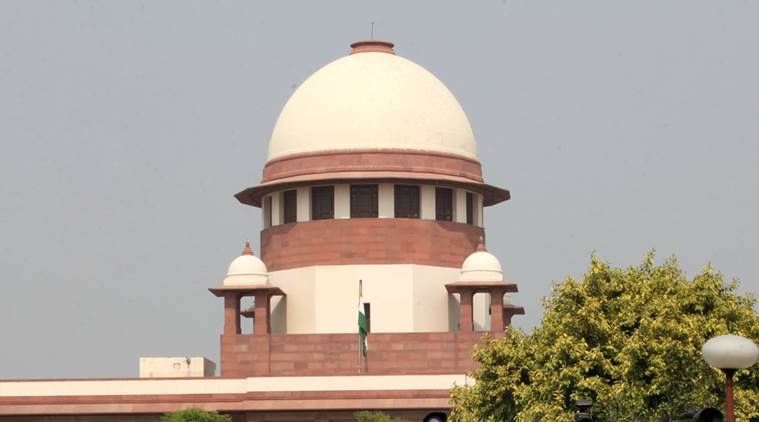
Context
Recently, the Supreme Court (SC) commuted the death sentence of a man, convicted of the rape and murder of a seven-year-old girl, to life imprisonment.
- The judgment may become a significant precedent to the anti-death penalty cause.
What was SC’s Ruling in the Current Case?
- SC commuted the death sentence to life imprisonment, with the rider that he shall not be entitled to “premature release or remission before undergoing actual imprisonment” for a period of 30 years.
- SC advised the trial judges that they should not be swayed in favour of death penalty merely because of the dreadful nature of the crime and its harmful impact on the society. They should equally consider the mitigating factors in favour of life imprisonment.
- SC referred to the evolution of the principles of penology and said that penology had grown to accommodate the philosophy of "preservation of human life".
- Penology is a sub-component of criminology that deals with the philosophy and practice of various societies in their attempts to repress criminal activities, and satisfy public opinion via an appropriate treatment regime for persons convicted of criminal offences.
- SC noted that that though capital punishment serves as a deterrent and a "response to the society’s call for appropriate punishment in appropriate cases",
- The principles of penology have "evolved to balance the other obligations of the society, i.e., of preserving the human life, be it of accused, unless termination thereof is inevitable and is to serve the other societal causes and collective conscience of society".
What is a Death Penalty?
- Capital punishment, also called the death penalty, is the execution of an offender sentenced to death after conviction by a court of law of a criminal offence. It is the highest penalty awardable to an accused. Generally, it is awarded in extremely severe cases of murder, rapes, treason etc.
- The death penalty is seen as the most suitable punishment and effective deterrent for the worst crimes. Those who oppose it, however, see it as inhumane. Thus, the morality of the death penalty is debatable and many criminologists and socialists all across the globe, have been long demanding abolition of the death penalty.
What are the Arguments in Favour of the Death Penalty?
- Retribution: One of the key principles of retribution is that people should get what they deserve in proportion to the severity of their crime.
- This argument states that real justice requires people to suffer for their wrongdoing and to suffer in a way appropriate for the crime.
- Deterrence: Capital punishment is often justified with the argument that by executing convicted murderers, we will deter would-be murderers from killing people.
- It is often argued that the death penalty provides closure for victims' families.
What are the Arguments Against the Death Penalty?
- Deterrence Ineffective: The statistical evidence doesn’t confirm that deterrence works. Some of those executed may not have been capable of being deterred because of mental illness or defect.
- Death has been prescribed in rape cases since 2013 (Sec. 376A of IPC), still, rapes continue to happen and in fact, the brutality of rapes has increased manifold. This compels one to think of the death penalty is an effective deterrent to crime.
- Execution of the Innocent: The most common argument against capital punishment is that sooner or later, innocent people may get killed, because of mistakes or flaws in the justice system.
- According to Amnesty International: As long as human justice remains fallible, the risk of executing the innocent can never be eliminated.
- Death has been abolished as a form of punishment in most of the developed countries.
- No Rehabilitatiom: Capital punishment doesn't rehabilitate the prisoner and return them to society.
What is the Status of Death Penalty in the Indian Context?
- Prior to the Criminal Procedure (Amendment) Act (Cr PC) of 1955, the death penalty was the rule and life imprisonment an exception in India.
- Further, the courts were bound to give an explanation for awarding a lighter penalty than death for capital offences.
- After the amendment of 1955 courts were at liberty to grant either death or life imprisonment.
- As per Section 354 (3) of the Cr PC, 1973 the courts are required to state reasons in writing for awarding the maximum penalty.
- The situation has been reversed and a life sentence is the rule and death penalty an exception in capital offences.
- Moreover, despite a global moratorium against the death penalty by the United Nation, India retains the death penalty.
- India is of view that allowing criminals guilty of having committed intentional, cold-blooded, deliberate and brutal murders to escape with a lesser punishment will deprive the law of its effectiveness and result in travesty of justice.
- In concurrence of this, a proposal for the scrapping of the death penalty was rejected by the Law Commission in its 35th report 1967.
- In India as per official statistics, 720 executions have taken place in India after it became independent in the year 1947, which is a minuscule fraction of the people who were awarded death penalty by the trial courts.
- In the majority of the cases, death was commuted to life imprisonment and some were acquitted by the higher courts.
What are the SC’s Previous Rulings on on the Death Penalty?
- Jagmohan Singh v. State of UP 1973 case: SC held that according to Article 21 deprivation of life is constitutionally permissible if that is done according to the procedure established by law.
- Thus the death sentence imposed after a trial in accordance with legally established procedures under Cr.PC and the Indian Evidence Act 1872 is not unconstitutional under Article 21.
- Rajendra Prasad v. State of UP 1979 case: SC held that, if the murderous operation of a criminal jeopardizes social security in a persistent, planned and perilous fashion then his enjoyment of fundamental rights may be rightly annihilated.
- Bachan Singh v. the State of Punjab 1980 case: SC propounded the dictum of ‘rarest of rare cases’ according to which death penalty is not to be awarded except in the ‘rarest of rare cases’ when the alternative option is unquestionably foreclosed.
- Rarest of Rare Cases can be described
- When the murder is committed in an extremely brutal, ridiculous, diabolical, revolting, or reprehensible manner so as to awaken intense and extreme indignation of the community.
- When total depravity and cruelty are the motives behind a murder.
- Rarest of Rare Cases can be described
- Machhi Singh v. State of Punjab 1983 case: The Supreme Court laid down certain considerations for determining whether a case falls under the category of rarest of rare cases or not.
GS-III
International Thermonuclear Experimental Reactor (ITER)
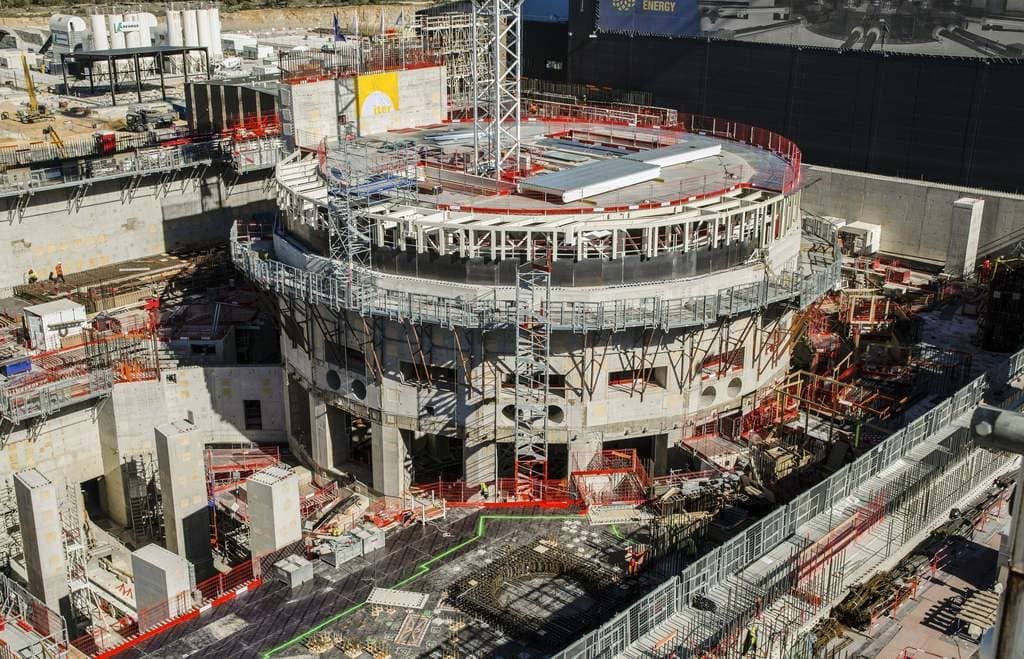
Context
Scientists in the United Kingdom have achieved a new milestone in producing nuclear fusion energy, or imitating the way energy is produced in the Sun. The record and scientific data from these crucial experiments are a major boost for ITER.
ITER Project
- ITER is international nuclear fusion research and engineering megaproject, which will be the world’s largest magnetic confinement plasma physics experiment.
- The goal of ITER is to demonstrate the scientific and technological feasibility of fusion energy for peaceful use.
Project details
- The project is funded and run by seven member entities—the European Union, India, Japan, China, Russia, South Korea and the United States.
- The EU, as host party for the ITER complex, is contributing about 45 per cent of the cost, with the other six parties contributing approximately 9 per cent each.
- Construction of the ITER Tokamak (doughnut-shaped apparatus) complex started in 2013 and the building costs were over US$14 billion by June 2015.
How does it work?
- Hydrogen plasma will be heated to 150 million degrees Celsius, ten times hotter than the core of the Sun, to enable the fusion reaction.
- The process happens in a doughnut-shaped reactor, called a tokamak, which is surrounded by giant magnets that confine and circulate the superheated, ionized plasma, away from the metal walls.
- The superconducting magnets must be cooled to -269°C (-398°F), as cold as interstellar space.
- Scientists have long sought to mimic the process of nuclear fusion that occurs inside the sun, arguing that it could provide an almost limitless source of cheap, safe and clean electricity.
- Unlike in existing fission reactors, which split plutonium or uranium atoms, there’s no risk of an uncontrolled chain reaction with fusion and it doesn’t produce long-lived radioactive waste.
What is a Solar Storm?
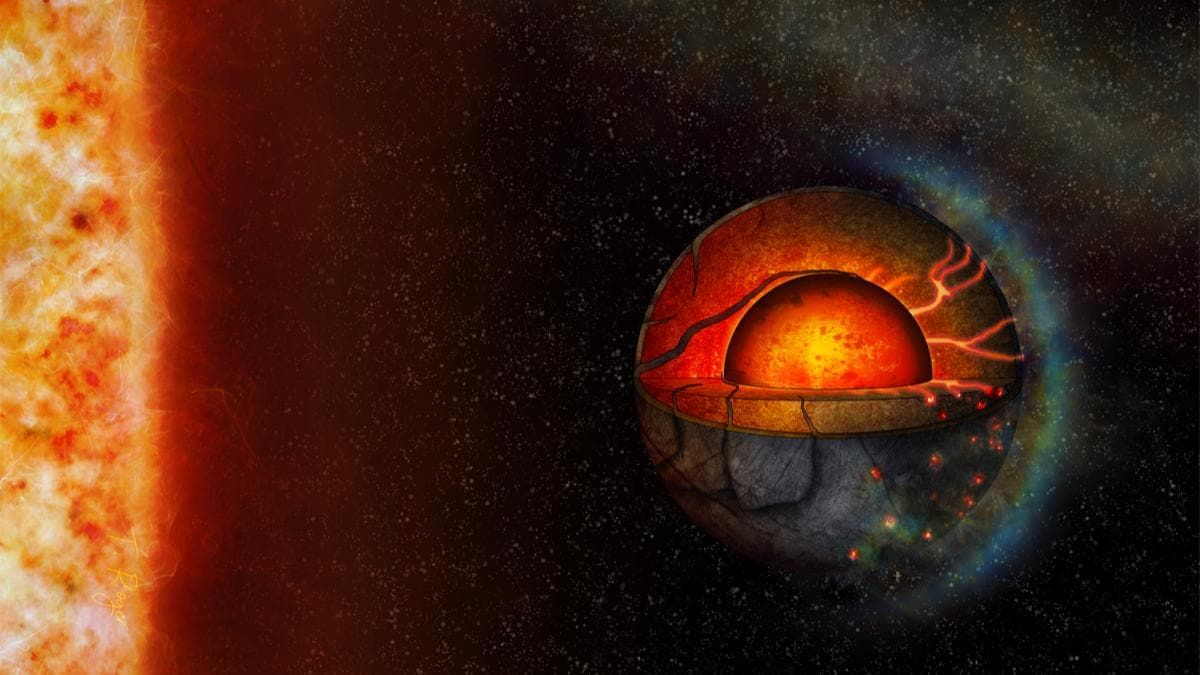
Context
Spacex’s newest fleet of satellites is tumbling out of orbit after being struck by a solar storm.
About Solar Storm
- A solar storm or a Coronal Mass Ejection as astronomers call it is an ejection of highly magnetized particles from the sun.
- These particles can travel several million km per hour and can take about 13 hours to five days to reach Earth.
- Earth’s atmosphere protects us, humans, from these particles.
- But the particles can interact with our Earth’s magnetic field, induce strong electric currents on the surface and affect man-made structures.
How did they impact SpaceX satellites?
- The issue came up due to increased drag created by the solar storm in the upper reaches of the Earth’s atmosphere.
- These storms cause the atmosphere to warm and atmospheric density at our low deployment altitudes to increase.
- In fact onboard GPS suggests the escalation speed and severity of the storm caused atmospheric drag to increase up to 50 percent higher than during previous launches.
History of solar storms
- The first recorded solar storm occurred in 1859 and it reached Earth in about 17 hours.
- It affected the telegraph network and many operators experienced electric shocks.
- A solar storm that occurred in 1921 impacted New York telegraph and railroad systems and another small-scale storm collapsed the power grid in Quebec, Canada in 1989.
- A 2013 report noted that if a solar storm similar to the 1859 one hit the US today, about 20-40 million people could be without power for 1-2 years, and the total economic cost will be $0.6-2.6 trillion.
Why are they a cause of concern?
- The Sun goes through an 11-year cycle – cycles of high and low activity.
- It also has a longer 100-year cycle.
- During the last three decades, when the internet infrastructure was booming, it was a low period.
- And very soon, either in this cycle or the next cycle, we are going towards the peaks of the 100-year cycle.
- So it is highly likely that we might see one powerful solar storm during our lifetime.
Accelerate Vigyan Scheme
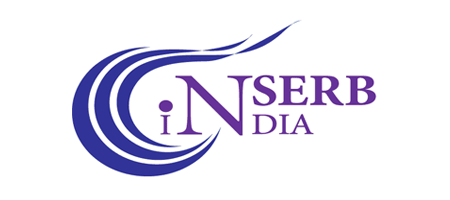
Context
Recently, the Science and Engineering Research Board (SERB), has invited applications under ‘ABHYAAS’, a program of ‘Accelerate Vigyan’ scheme, for summer season.
- SERB is an autonomous body of the Department of Science & Technology (DST), Union Ministry of Science & Technology.
What is the Accelerate Vigyan Scheme?
- "Accelerate Vigyan" (AV) strives to provide a big push to high-end scientific research and prepare a scientific workforce, which can venture into research careers and a knowledge-based economy.
- AV aims to expand the research base in the country, with three broad goals — consolidation/aggregation of all scientific training programs, initiating high-end orientation workshops and creating opportunities for training and skill internships.
What are the Components of the Accelerate Vigyan Scheme?
- ABHYAAS: It is a program of AV scheme, is an attempt to boost research and development in the country by enabling and grooming potential postgraduate / PhD students by developing dedicated research skills in selected areas / disciplines / fields through its two components — high-end workshops (“KAARYASHALA”) and Training and Skill Internship (“VRITIKA”).
- This is especially important for researchers with limited opportunities to access such learning capacities/facilities/infrastructure.
- SAMMOHAN: It has been sub-divided into SAYONJIKA and SANGOSHTI.
- SAYONJIKA is an open-ended program to catalogue capacity building activities in science and technology supported by all government funding agencies in the country.
- SANGOSHTI is a pre-existing program of SERB for the organisation of workshops.
How are such Steps Helpful?
- Capacity Building: The database of skilled manpower developed across different disciplines through all the sub-components of the AV would help in capacity building.
- Social Responsibility: The scheme also seeks to garner the social responsibility of the scientific community in the country.
What is SWIFT and why is Russia being threatened with its exclusion?
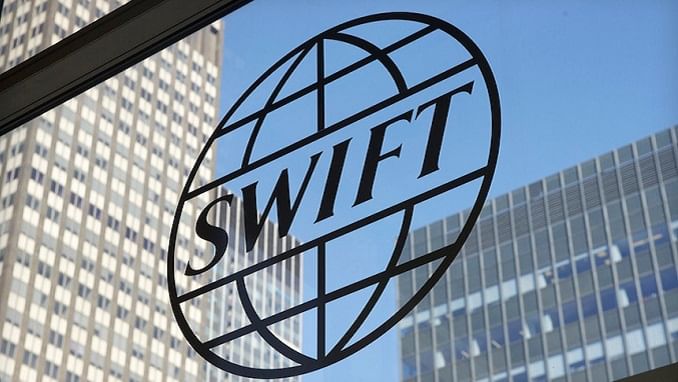
Context
As tensions peaks over Ukraine the United States could exclude Russia from the Society for Worldwide Interbank Financial Telecommunication (SWIFT).
What is SWIFT?
- SWIFT is an international network for banks worldwide to facilitate smooth money transactions globally.
- It is basically a messaging network used by banks and financial institutions globally for quick and faultless exchange of information pertaining to financial transactions.
- The Belgium-headquartered SWIFT connects more than 11,000 banking and securities organization in over 200 countries and territories.
- First used in 1973, it went live in 1977 with 518 institutions from 22 countries, its website states.
What exactly is it?
- SWIFT is merely a platform that sends messages and does not hold any securities or money.
- It facilitates standardized and reliable communication to facilitate the transaction.
How does it facilitate banking?
- Each participant on the platform is assigned a unique eight-digit SWIFT code or a bank identification code (BIC).
- If a person, say, in New York with a Citibank account, wants to send money to someone with an HSBC account in London, the payee would have to submit to his bank the London-based beneficiary’s account number along with the eight-digit SWIFT code of the latter’s bank.
- Citibank would then send a SWIFT message to HSBC. Once that is received and approved, the money would be credited to the required account.
How is the organization governed?
- SWIFT claims to be neutral. Its shareholders, consisting of 3,500 firms across the globe, elect the 25-member board, which is responsible for oversight and management of the company.
- It is regulated by G-10 central banks from Belgium, Canada, France, Germany, Italy, Japan, The Netherlands, the UK, the US, Switzerland, and Sweden, alongside the European Central Bank.
- Its lead overseer is the National Bank of Belgium.
- The SWIFT oversight forum was established in 2012.
- The G-10 participants were joined by the central banks of India, Australia, Russia, South Korea, Saudi Arabia, Singapore, South Africa, the Republic of Turkey, and the People’s Republic of China.
- Europe, Middle East, and Africa are highest contributors to SWIFT.
What happens if one is excluded from SWIFT?
- US excluding Russia from SWIFT could have serious repercussions on how Russian banks carry out international financial transactions.
- If a country is excluded from the most participatory financial facilitating platform, its foreign funding would take a hit, making it entirely reliant on domestic investors.
- This is particularly troublesome when institutional investors are constantly seeking new markets in newer territories.
- An alternative system would be cumbersome to build and even more difficult to integrate with an already expansive system.
Are any countries excluded from SWIFT?
- Iranian banks were ousted from the system in 2018 despite resistance from several countries in Europe.
- This step, while regrettable, was taken in the interest of the stability and integrity of the wider global financial system, and based on an assessment of the economic situation.
FAQs on UPSC Daily Current Affairs- February 10, 2022
| 1. What is the significance of UPSC Daily Current Affairs in the preparation of the GS-II and GS-III exams? |  |
| 2. How can UPSC Daily Current Affairs help in improving my understanding of the GS-II and GS-III syllabus? |  |
| 3. How can I effectively use UPSC Daily Current Affairs for my GS-II and GS-III exam preparation? |  |
| 4. Can UPSC Daily Current Affairs be used as the sole source for preparing GS-II and GS-III exams? |  |
| 5. Are there any specific strategies to effectively remember and recall the information from UPSC Daily Current Affairs? |  |














